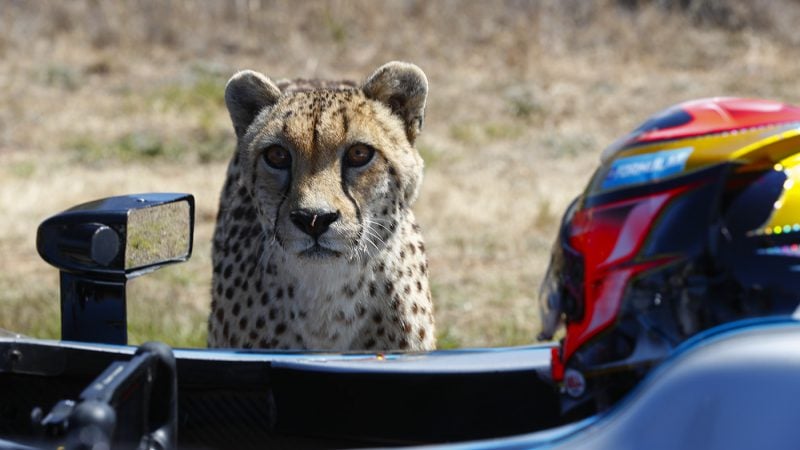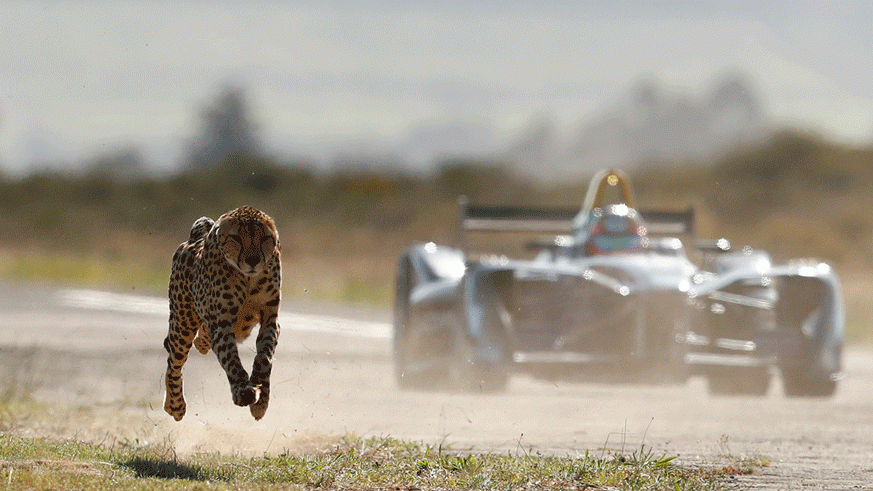
A week before the December 2 season-opening race of the 2017 FIA Formula E Championship, Techeetah team driver Jean-Éric Vergne got behind the wheel for an unusual challenge. The French driver, who placed fifth at the 2016 FIA championship, tested his driving skills against the world’s fastest land animal – the cheetah. And, unlike the Michael Phelps race against a shark earlier this year, this one did not rely on a CGI animated replica.
Though a machine racing against an animal may appear to have an unfair advantage, cheetahs are known for their astounding ability to attain a speed of up to 60 miles per hour in just three seconds. Given that Vergne’s Formula E car has a similar acceleration capability, Alejandro Agag, founder & CEO of Formula E, and his team were “curious to see the outcome [of the race]”
Filmed on a landing strip in South Africa’s Western Cape and overseen by conservation experts and animal welfare organizations, the 100-meter race began with the domesticated cheetah in the lead. However, Vergne managed to get ahead and win the race. He, of course, had a slight advantage given that his car can reach up to 140 miles per hour, while the cheetah’s speed maxes out at about 70 miles per hour.

The race, which has gone viral since the video was released on November 28, serves a dual purpose. It helps raise the profile of the three-year-old FIA Formula E Championship, which is similar to the Formula One Championship except for one critical difference – the vehicles are all electric and therefore environmentally friendly.
More importantly, the event, timed to coincide with the start of the UN Environment Assembly in Nairobi, Kenya from December 4 to 6, aims to raise awareness of the critically endangered cheetahs. With less than 7,000 left in the wild, the big cats have been severely impacted by the loss of habitat caused by climate change and human encroachment. If action is not taken soon, these magnificent animals may disappear from the face of the planet. Vergne says, “Both the Techeetah Formula-E Team and I want to be part of raising awareness for the wider impact that climate change has on our planet.”
Vergne is not the first to try to help conservation efforts by racing against the wild cat. In 2007, South Africa’s Bryan Habana attempted to outpace the cheetah on foot in a 100-meter sprint. However, despite a full 50-meter head start, the world’s fastest rugby player was no match for the world’s fastest land animal, who was motivated by an elusive hunk of meat.
Resources: techeetahfe.com, Wikipedia.org